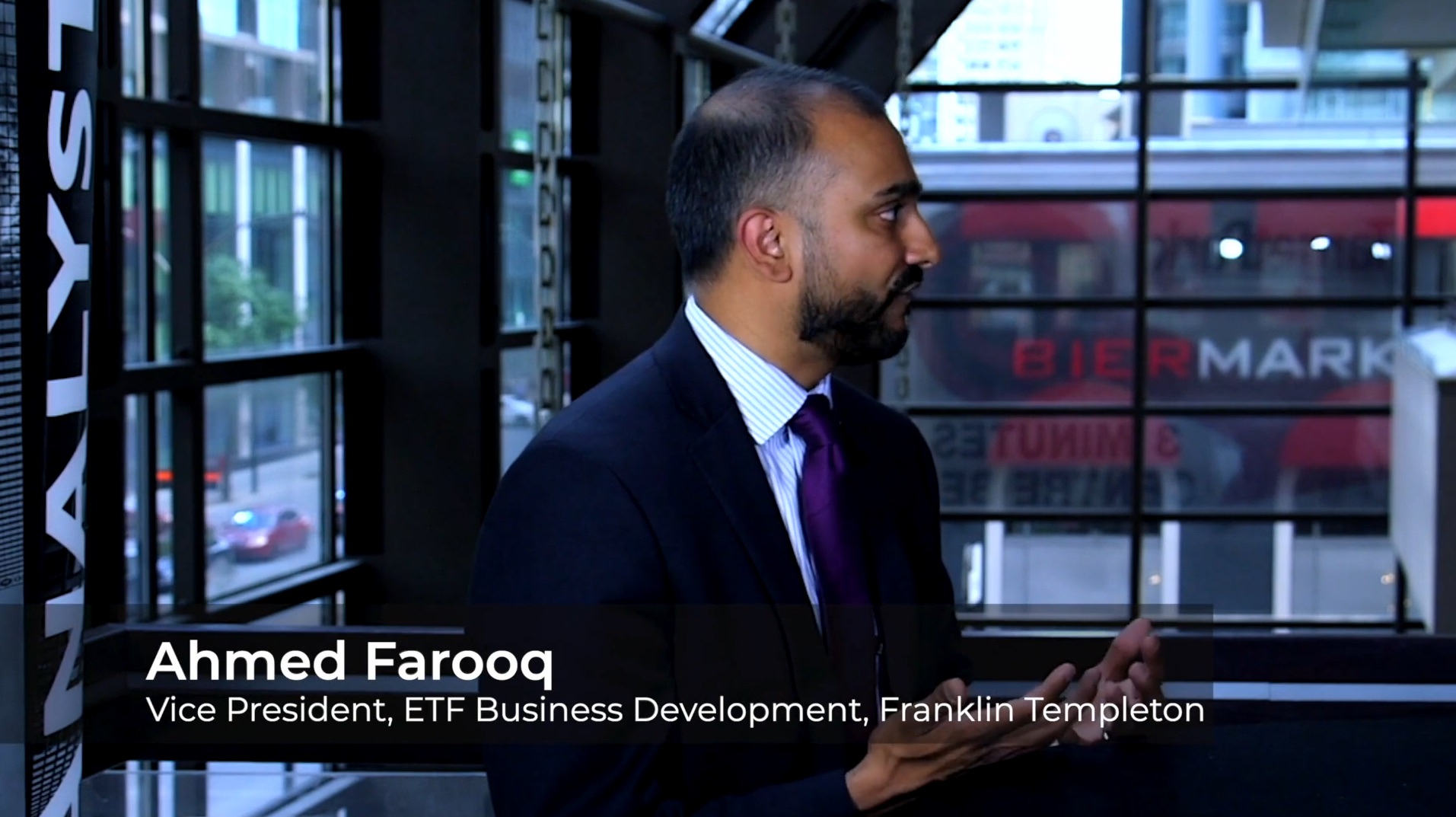“Charts of the Week” 8/21/19
by Andrew Adams CFA, CMT, Saut Strategy LLC
Follow Me @DayTraderGator on Twitter for Additional Thoughts
For once, the outline for the near-term direction of the stock market is pretty cut-and-dry. Over the last few weeks, it has become clear that the zones around 2943 and 2822 in the S&P 500 are important and have been defended as key resistance and support, respectively, by the bears and bulls. Accordingly, it makes sense to have a bullish bias above 2943, a bearish bias below 2822, and to let the traders duke it out in that “no-edge” middle ground. That’s really the essence of technical analysis — identify important areas on the charts and then sit back and watch how the market reacts to those areas. If new important levels form, we will then watch those, too.
Since the major averages appear rangebound for now, it might be a good time to take a step back and examine the bigger picture — from both a fundamental and technical perspective. Regular readers probably know by now that my market outlook is typically dominated by the technicals — a combination of price charts, breadth, and sentiment analysis — while the economy and fundamentals usually take a backseat. I often joke that the most important thing I learned by going through the CFA program is that I’m definitely a “chart guy,” but obviously the economy and individual company fundamentals dictate what the stock market does in the longer run.
To use one of the many sailing clichés that pepper the domain of market strategy, the economy and fundamentals are like the wind and current that will ultimately determine where you go and how quickly you get there if you don’t make any adjustments. The technicals, meanwhile, help you make those adjustments (I’m not a sailor so that exhausts how far I can take that analogy).
I tend to put more weight on the technicals since: 1) I’m more short-term oriented by nature and it’s easier to determine where the market may be in a week than in a year; and 2) ultimately the charts do reflect the market’s opinion on the future path of the economy and the fundamentals anyway. The problem I have with a lot of economic/fundamental information is that by the time it’s released, it’s already old news and often largely priced in. Company’s report the previous quarter’s earnings and the daily economic releases we get are generally at least a month old and sometimes even older (they’re also frequently subject to retroactive adjustment, e.g. GDP estimates). Surprises can and do happen, of course, but for the most part it’s hard to trick the forward-looking financial markets and they often sniff out what’s going to happen before it shows up in the data, especially when it comes to the broad market.
It’s often forgotten that the stock market is a leading economic indicator. In fact, the S&P 500 is one of the ten indicators used by the Conference Board in their U.S. Leading Economic Index® (see page 17). The stock market’s ability to discount unforeseen trouble is one of the main reasons I don’t waste an inordinate amount of time focusing on economic indicators and why I’ve felt that much of the talk over the last week about the yield curve inverting (at least a part of it anyway) is way overblown.
At the lows of last week, the S&P 500 was beneath where it was in late January 2018 and the Russell 2000 is still about 7% below its own high at that point. So that means that the U.S. stock market has made NO progress over the last 19 months and we have had to suffer through multiple false breakouts and a 20% decline in the major averages less than a year ago. Meanwhile, the DAX (Germany’s primary stock index) is ~14% beneath its 2018 high and China’s Shanghai Composite Index is still almost 20% below its January 2018 high. Global stock markets have, therefore, already signaled that they’ve been worried about the direction of our global, integrated economy. The inverted U.S. yield curve is just the latest symptom of the larger extended malaise and isn’t really telling us anything new.
And to be clear, the “inversion” getting all the attention last week was a brief drop of the yield on the 10-year U.S. Treasury below that of the 2-year U.S. Treasury, NOT the 3-month and 30-year spread that Jeff Saut has regularly stated is his preferred measure of inversion; that has not yet inverted.
What follows are my thoughts on the yield curve with respect to a recession. I don’t consider myself a fixed income/bond market expert, so take what I say with as large a grain of salt as you want (by the way, the only subjects on which I do consider myself an expert are The Simpsons from 1989-2000, the American version of The Office, and the James Bond novels/films).
It’s important to remember what an inverted yield curve signifies — that longer- term bonds yield less than shorter-term bonds. Under normal circumstances, this makes little sense considering bond holders generally demand a higher interest rate to loan their money for a longer period of time. There’s more risk involved with doing so (inflation, interest-rate risk, etc.), so someone willing to buy a 30-Year U.S. Treasury yielding 2.05% is basically either saying they believe rates will continue to fall (making their bond worth more) or they no longer really care and just want the safety and guaranteed income of long-term treasuries.
To oversimplify things even further, short-term rates typically reflect the current Federal Funds rate and the expectations for its near-term path (e.g. will the Fed raise or lower rates going forward?), while longer-term rates are more predicated on supply and demand based largely on broader economic and market expectations. Again, this is an overly-simplified take, but longer-term rates generally move with the perception of the economy — higher rates when things are expected to get better, lower rates when things are expected to get worse.
So, what often happens during an economic expansion is that the longer end of the curve rises as things get better while the shorter-end of the curve stays relatively low until the Fed starts raising rates, which can be years into the expansion as we’ve seen during this current cycle. This dynamic creates a steepening curve and is generally viewed positively by market participants since it’s the best of both worlds: cheap, easy money on the short end combined with improving economic expectations. Then, at some point the Fed starts to raise rates to hopefully prevent inflation from getting out of control and the shorter- end of the curve starts to creep up and flatten the curve.
If short-term rates get too high, that can start to put extra pressure on the economy, but by that point it’s usually accompanied by a general slowing regardless (typically at this stage the job market is tighter, debt has expanded and delinquency starts to rise, corporate earnings growth slows due to higher costs/slowing demand, etc.). The general slowing of the economy (or the expectation that it will slow) puts downward pressure on longer-term rates at a time when shorter-term rates have risen, and if longer-term rates fall too far and at a pace greater than short-term rates, that can ultimately lead to a yield curve inversion.
The point I’m trying to make is that, yes, a yield curve inversion has historically preceded recessions, but there is nothing magical about the signal. It doesn’t cause the recession or “start the clock” on a recession, it’s just a symptom of a slowing economy and slowing economies that get bad enough do typically lead to a recession at some point. I guarantee the U.S. economy will experience a recession at some indeterminate date in the future, but, as I’m sure you’ve seen discussed by now, the timing of the yield curve inversion and the actual recession is not exactly something you can set your watch to. Historically, there has often been a significant delay from the point of 2-10 inversion and when the recessions have officially begun (see page 14).
It’s also not a signal I really want to use to try to time a top in the stock market considering there is also a history of stocks doing very well from the point of initial inversion to the eventual market high.
Last week was not an additional danger signal for anyone who has been paying attention. A stock market that has gone nowhere in 19 months and a 30-year U.S. Treasury that has fallen from almost 3.5% to under 2% at last week’s low has already signaled that the financial markets are concerned. President Trump even tweeted this week imploring a “100 basis point cut and additional quantitative easing,” which isn’t exactly reflective of a booming economy. I think we currently have an economy that’s still doing ok and growing, but that is showing signs of slowing more than a decade after the Financial Crisis. This slowdown (especially when paired with the uncertainty and negative impacts of the trade war) is why we’ve seen the moves in the financial markets we’ve had over the last year and it’s reflected in the tougher earnings environment of this year compared to the previous two. That doesn’t mean the secular bull market is definitely over or that the economy can’t start to accelerate again, but I do think it means that a new mindset has to be adopted as long as we’re in this sideways, slower growth period.
I started saying last summer that “this is no longer an investors’ market, it’s a traders’ market,” and I still think that framework applies. It doesn’t mean that long-term investors necessarily have to dump all their stocks or that they won’t be ok down the road, but it does mean it’s probably going to continue to be a frustrating environment to passively hold stocks or funds unless the indices can break out of their almost two-year trading range and start a new leg higher in earnest.
I hope that breakout happens and the world economy starts to boom again, but it’s not something I’m willing to actively “bet” on right now. Instead, I continue to follow the market one move at a time and try to stay consistent with its near- term direction as best I can. I was willing to follow the market higher despite danger signals as long as it was still moving higher but by breaking back down yet again and creating another false breakout a few weeks ago it raised further red flags to me. That is why I turned cautious and why I am still not getting overly aggressive until the market gives me good reason to do so.
S&P 500 Sector Snapshot
Only positive sectors over the last week are the defensive Consumer Staples and the yield-sensitive REITs and Utilities.

S&P 500 Big Picture – Arithmetic Scale
This chart below continues to be my main “big picture” view. The uptrend since the 2009 bottom is still in place, but the S&P 500 has struggled to build on its gains once it breaks out to new highs over the last couple of years (unlike in 2013 and 2017). I’m still expecting the ascending red line to continue to hold as resistance until the market proves itself by breaking over it, limiting the near-term potential upside. As for support, below 2700 there isn’t much in the way of obvious support until the 2200-2500 zone, which is why I continue to stay flexible and not in a big rush to get aggressive.

S&P 500 Big Picture – Logarithmic Scale

When we switch to the log scale on the Y-axis (which is generally recommended for longer-term charts with big price changes), the picture looks even more serious. Most notably, the major support line connecting the 2009 and 2016 lows broke late last year and since then it has turned to major resistance. The S&P 500 has rallied back up to its underside twice now, and has been rejected both times. When combined with the other major resistance line connecting the highs of the last two years, it is clear why the area around 3000 has been so hard to overcome in recent months. The weekly RSI indicator (lower panel) continues to make lower highs, too, meaning momentum is slowing and creating a negative divergence from price.
S&P 500 Near Term
The S&P 500 in the near term is a little more straightforward. A range has developed from 2943 down to 2822 and we’re now supposed to assume that range will continue to hold until a definitive break from it. If the index breaks above 2943, then there’s a good chance it will then take another shot at getting up to a new all-time high. Meanwhile, if 2822 is taken out, the next potential support levels that stand out are 2800, the 200-day moving average (currently at 2800), and then the early June low around 2725.

S&P 500 Still in Pattern of Lower Highs and Lower Lows
It is worth noting, too, that the S&P 500 is still in a pattern of lower highs and lower lows (a downtrend) when using closing levels – the most important “price” of the day.

Breadth Double Bottom?
Along with the double bottom put in by the S&P 500 over the last couple of weeks, the percentage of stocks on the NYSE above the 50-day moving average also put in a double bottom around 27%. That does support a low being made, but so far we have not seen a notable expansion underneath the broad market – as the indicator remains around 36%. Obviously, any rise in the major averages should be accompanied by a similar pickup in breadth to have more confidence in the move.

Watch China
China’s Shanghai Composite Index remains beneath its 2018 reaction high and WELL beneath its 2015 high, but I do think China stocks are worth watching closely here. This index, at least, has not broken below the lows of late last year and is close to breaking its smaller downtrend since April when the trade war rhetoric escalated again. As mentioned previously, the market often figures things out before official news drops, so a breakout and acceleration higher by Chinese stocks could signal progress in the trade war even if we’re not hearing about it yet.

DAX Remains Under Pressure
Germany’s DAX Composite Index, meanwhile, remains well beneath its early 2018 high and in a pattern of lower highs and lower lows since topping out again in early July. Not exactly the greatest signal from Europe’s most important stock index.

Here’s That “Scary” 10-2 Spread Everyone is Talking About
As mentioned, last week the yield on the 10-Year U.S. Treasury briefly dropped below that of the 2-Year U.S. Treasury and freaked everyone out since everyone and their mother now know that it means a recession is on the way. However, going back over the last 35+ years, there has been a noticeable delay from when the 10-2 spread first inverted (black vertical dotted lines) and when the recession actually occurred (black shaded areas). Moreover, the initial inversion was a horrible market-timing signal in that all three prior cases were followed by more gains in the S&P 500 (lower panel).

Note: The latest inversion does not show up on this chart since it only briefly happened intraday and this 14 is an “end of day” chart
And Since I Know Everyone Will Ask…
…Here is the same chart for the 30-Year and 3-Month U.S. Treasuries spread that Jeff Saut has mentioned previously as being a better indication of an “inverted” yield curve. It, too, has gone negative before the last three recessions but there is still a noticeable delay and so far it has not inverted recently.

A Negative 10-2 Spread Isn’t Giving Us New Information
The yield on the 30-Year U.S. Treasury has nosedived from around 3.45% to under 2% at its recent low – all in less than a year. This drop was already signaling that the market’s economic expectations were fading.

Leading Economic Indicators Have Basically Been Flat Over the Last Year
Likewise, there has been little progress made in the Conference Board’s Leading Economic Index® over the last year. I like this indicator because it, too, has a history of topping out prior to recessions and includes the S&P 500 as one of its 10 leading indicators. We should get the July update for this indicator tomorrow and I’ll be curious to see if it falls once again. The lack of expansion over the last year is consistent with a slowing economy.

Consumer and Business Confidence Is Fading Too
Both Consumer Confidence and Small Business Optimism experienced major boosts after President Trump was elected, but the honeymoon period seems to have worn off. Both indicators have dropped over the last few months after topping out late last year. These indicators usually do peak prior to recessions.

Credit Card Delinquency Rate Rising
I also like to keep an eye on credit card payment delinquency rates since I think it makes intuitive sense that consumers are feeling more individual economic pressure when it’s rising. The overall level is currently nowhere near where it was pre-Financial Crisis, but it is rising and shows that people are having more trouble paying their credit cards compared to a few years ago.

ISM Manufacturing and Non-Manufacturing
The ISM monthly indices for Manufacturing and Non-Manufacturing: Business Activity both remain in positive territory, but have fallen over the last year. This is consistent with a slowdown.

Source: AdvisorPerspectives.com and dshort.com
Trade Ideas
Most stocks still seem to be moving with the overall market (risk-on and risk-off days), but in case we start to see some non-correlated movement here are a few trade ideas over the next few pages that stand out to me right now.
When I look for trades, I am looking for stocks I think can move in the direction I want them to go quickly while limiting my downside if I am wrong. I expect to be wrong a decent amount of the time given the tight stops, but the idea is that the winners should more than pay for the losers. There is an opportunity cost to holding a position, as the capital allocated to it prevents you from using that capital in another position, so if I enter a stock and it doesn’t quickly do what I think it should I may cut it even though a stop or profit target isn’t hit. Likewise, I usually move my stop up to my breakeven point once the trade starts to go in my favor in order to prevent a winning trade to turn into a losing trade. Understandably, my trading strategy might not fit your trading/investing strategy, but the trades highlighted in this report are the kinds that I typically look for.
Current Open Positions in Personal Accounts (this changes daily): Long TLT Sep20’19 Puts
LONG: United Parcel Service, Inc. (UPS)
UPS was highlighted in Harry Katica’s report on Friday and the technical picture looks interesting as well. After drifting lower for about a year and a half, it exploded higher after last month’s earnings report. Since then, it has largely consolidated on decreasing volume while staying above the support zone of $111-$113. As long as it stays above that zone, it looks promising for another attempt higher. I’d look for at least a move back up to $120, but if UPS has legitimately turned a corner, we could see it challenge its early 2018 high at some point.

SHORT: iShares 20+ Year Treasury Bond ETF (TLT)
This is more of a speculative macro play than I usually highlight in this report, but it seems to me that the recent tanking of long-term rates is overdone and the resultant move in TLT looks like a potential blow-off top to me. After going almost vertical in early August, it may be time for some retracement, so this trade could be played by shorting TLT, buying put options (I currently have a position), or buying TBT, the inverse fund. If the recent high is taken out (recent low in rates), then the trade no longer makes sense, but until then the risk/reward seems to be favorable.

LONG: Baidu, Inc. (BIDU)

I’m not usually a bottom picker, but because of the aforementioned chance that Chinese stocks could soon break out to the upside and the recent action in BIDU, I think the risk/reward is worth it. First, BIDU recently dropped beneath its 2015 extreme low but quickly rallied back up above it – a false break that could have trapped some short sellers. Moreover, the bounce over the last couple of sessions has come on extremely heavy volume for the stock after beating earnings estimates. Accordingly, there’s quite a bit of room just up to the former major support zone around $155. It may encounter some near- term resistance, but as long as BIDU stays above its recent low I think it’s one I’d be comfortable trying to play a possible bottom.
*****
-
Investing/trading involves substantial risk. The author and Saut Strategy LLC do not guarantee or otherwise promise as to any results that may be obtained from using this report. Past performance should not be considered indicative of future performance. No reader should make any investment decision without first consulting his or her own personal financial advisor and conducting his or her own research and due diligence, including carefully reviewing any prospectus and other public filings of the issuer. These commentaries, analyses, opinions, and recommendations represent the personal and subjective views of the author, and are subject to change at any time without notice.
-
The information provided in this report is obtained from sources which the author believes to be reliable. All charts are from stockcharts.com unless otherwise stated.
Copyright © Saut Strategy













